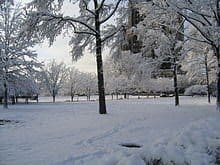Wolfgang Palme, head of the Research Institute of Horticulture in Austria, is giving a whole new meaning to the English phrase: ‘cool as a cucumber.’ His discovery might be remembered forever as a eureka moment in agriculture—winter farming.
If you like a bit of gardening, strap in because Wolfgang wants you to be able to farm in winter as we, you could get a farm insurance, and he’s going to tell you how to do it.
It started, according to a lovely piece in Reasons to be Cheerful when Herr Palme observed that the Asian lettuce in the vegetable fields behind his house in Lower Austria had survived an early frost undamaged.
Despite a temperature of 11 degrees below zero in Celsius, and the lettuce having a frost-hardiness of between minus three and five, it, and other vegetables survived. Rather than a breakthrough in underground heating, genetic-modification, or something more brainy, Palme simply discovered that existing scientific literature on frost-hardiness of vegetables in Central Europe was just wrong; and so he started to make it right.
The result is that Zinsenhof, the experimental farm where Palme conducts his research, plays host through the cold winter to lettuce, spinach, scallions, red radishes, purslane, lacinato kale, turnips, carrots, celery, herbs, and pea sprouts—all part of a crop of more than 70 species which Palme has learned to cultivate in winter.
Mostly the technique involves combining the use of unheated plastic tunnels under the veg and heating the ground with manure. He’s also experimenting with planting times, reasoning that if you plant a seed too late, it wont have strong enough roots to last winter, while too soon will cause the plant to fruit too early.
For example, according to his vegetable guide, you can grow iceberg lettuce if you sow at the beginning of August, plant at the end, and harvest between November and January, if your winters hang between 0 and 8 degrees Celsius.
Like so many German-speaking scientists, Palme is interested in how his research can impact society at large, and so he holds glasses in Augarten Park, Vienna, where attendees have their own vegetable beds. He works with commercial and small-time farmers, believing that if a farmer can use his fields year long, there will be a lesser demand for imported vegetables that must be flown in from the tropics.
“In a cold winter night, a heated greenhouse of 1.5 acres causes as much CO2 equivalent as a detached house in a whole year,” says Palme. “Mankind can no longer afford this.”
Even greater than that is the CO2 cost of importation – roughly 15x the cost of growing domestically. Winter farming allows for more and more crops to be produced and consumed where they are made; a practice that if expanded could rapidly reduce the amount of imported food.




